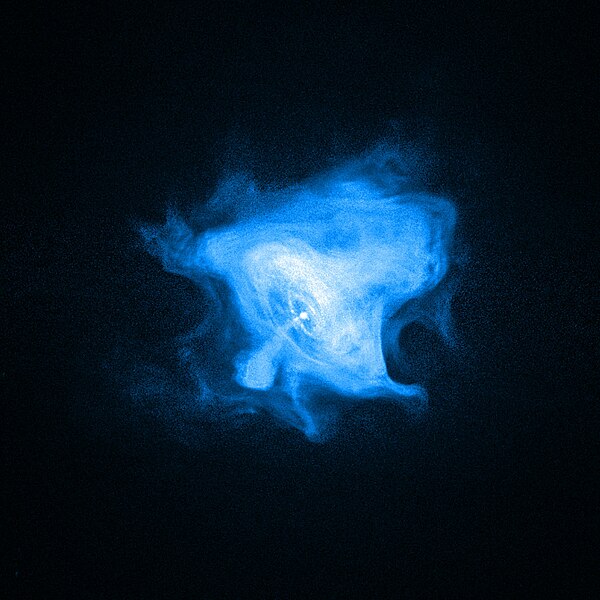File:Crab Nebula pulsar x-ray.jpg

本预览的尺寸:600 × 600像素。 其他分辨率:240 × 240像素 | 480 × 480像素 | 768 × 768像素 | 1,024 × 1,024像素 | 2,048 × 2,048像素 | 3,300 × 3,300像素。
原始文件 (3,300 × 3,300像素,文件大小:1.07 MB,MIME类型:image/jpeg)
文件历史
点击某个日期/时间查看对应时刻的文件。
| 日期/时间 | 缩略图 | 大小 | 用户 | 备注 | |
|---|---|---|---|---|---|
| 当前 | 2009年7月28日 (二) 14:37 |  | 3,300 × 3,300(1.07 MB) | Raeky | {{Information |Description= '''Description''': In the Crab Nebula, a rapidly rotating neutron star, or pulsar (white dot near the center), powers the dramatic activity seen by Chandra. The inner X-ray ring is thought to be a shock wave that marks the boun |
文件用途
以下3个页面使用本文件:
全域文件用途
以下其他wiki使用此文件:
- af.wikipedia.org上的用途
- el.wikipedia.org上的用途
- en.wikipedia.org上的用途
- en.wikiquote.org上的用途
- gl.wikipedia.org上的用途
- id.wikipedia.org上的用途
- ja.wikipedia.org上的用途
- kk.wikipedia.org上的用途
- nl.wikipedia.org上的用途
- ru.wikipedia.org上的用途

